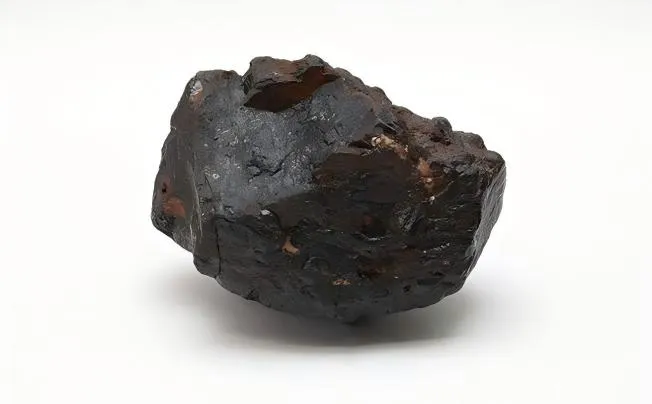Tungsten, derived from the Swedish words “tung sten,” meaning heavy stone, is fittingly named given its prominent attributes within metallurgy circles.
Is Tungsten the Heaviest Metal?
Demystifying Density
Density is defined as mass per unit volume; mathematically expressed as D = m/V (where D represents density, m denotes mass, and V symbolizes volume), it is a crucial metric when evaluating materials’ characteristics. Unlike weight—a force dependent on gravitational pull—density offers insight into how compact matter is arranged within a given space.
This distinction becomes especially relevant when comparing different elements whose weights may mislead us about their relative densities. The importance of density cannot be overstated; it plays a pivotal role across numerous scientific disciplines, including engineering mechanics, materials science, chemistry—and even geology!
For example, when constructing airplane fuselages or designing spacecraft, we prioritize lightweight yet strong materials, which often leads us to consider high-density yet low-weight options like titanium or aluminum alloys for optimal performance during flight operations.
Why does Density Matter?
In metallurgy and material science, density is more than just an academic concept; it has far-reaching implications for both practical usage and theoretical research. Different metal densities influence their behavior under varying conditions—such as changes in temperature or pressure—and consequently affect how they can be manufactured or processed. Heavier metals tend to require different techniques for shaping or joining compared to lighter ones due to their structural properties; thus, understanding these nuances is crucial for engineers.
Additionally, the significant relationship between density and other mechanical properties—such as tensile strength, hardness, and thermal conductivity—cannot be overstated. For instance, many denser metals exhibit superior strength-to-weight ratios, which allow them to bear considerable loads without permanent deformation.
This makes them indispensable in industries such as aerospace, where maximizing efficiency without compromising safety is vital. Understanding how these properties interconnect underscores why discerning metal densities remains key to innovation across manufacturing sectors.
Considerations related to environmental sustainability also come into play when discussing metal densities; denser materials may lead to increased efficiency through resource conservation during extraction processes due to smaller volumes needed for production yet demand more energy-intensive processing methods due to their inherent characteristics. Therefore, evaluating metal options based on their densities aids companies—not only economically but ecologically—as they move towards greener manufacturing practices.
The Majesty of Tungsten
What is tungsten?
Tungsten, known as wolfram in many regions, is a remarkable transition metal with the atomic number 74 and a symbol W derived from its German name. Discovered in the late 18th century by the Swedish chemist Carl Wilhelm Scheele, tungsten embodies exceptional properties that have earned it a revered status among metals.
It boasts the highest melting point of any element, standing resilient at a staggering 3422 degrees Celsius. Additionally, tungsten is renowned for its robustness and durability, making it a pivotal component in various industrial applications and cutting-edge technologies.
Historical uses and significance
Throughout history, tungsten has left an indelible mark on human civilization through its multifaceted utility. Ancient civilizations recognized the value of tungsten compounds for their vibrant colors in pottery glazes.
However, it wasn't until the late 19th century that tungsten's true potential was unearthed with the development of incandescent light bulbs. The filament within these revolutionary bulbs was crafted from tungsten due to its unparalleled heat-resistant properties, ushering in an era of widespread illumination previously unimaginable.
Tungsten's density: 19.25 g/cm³
One of the defining characteristics of tungsten lies in its impressive density, clocking in at approximately 19.25 grams per cubic centimeter. This remarkable density not only contributes to tungsten's hefty feel but also underscores its suitability for high-stress environments where strength and resilience are paramount.
From aerospace components to military armor-piercing ammunition, tungsten's density plays a crucial role in enhancing performance and longevity across diverse fields of application. As we delve deeper into the realm of heavy metals, tungsten emerges as a stalwart contender deserving reverence for its unparalleled attributes.
The Heaviest Metal Debate
Defining "heaviest": The debate over which metal holds the title of being the "heaviest" is a nuanced one that requires an understanding of both density and atomic mass. Density refers to how tightly packed the atoms are within a material, while atomic mass is a measure of how much matter an atom contains. While these two concepts may seem related, they can lead to different conclusions when determining the heaviest metal. Tungsten, for example, is often considered heavy due to its high density of 19.25 g/cm2, even though it does not have the highest atomic mass.
Uranium and plutonium: Heavy by atomic mass but not by density
Uranium and plutonium are fascinating examples of metals that are heavy in terms of atomic mass but do not exhibit the same level of density as tungsten or other dense metals like osmium and iridium. Uranium has an atomic mass much higher than tungsten, but its lower density means it does not feel as heavy in hand.
Similarly, plutonium, known for its use in nuclear reactors, possesses a high atomic mass yet does not rank among the densest metals. This discrepancy highlights the complexities involved in defining what truly makes a metal "heavy.".
The role of perception and common usage in defining "heaviest"
Perception plays a significant role in how we define what constitutes the heaviest metal. Common usage often dictates our understanding of weightiness, with certain metals like lead or mercury being associated with heaviness due to their widespread use and familiarity.
Tungsten's reputation as a heavy metal can be attributed to its common applications in industry and its resilience under extreme conditions rather than solely its density or atomic mass values. Ultimately, the concept of heaviness in metals is multi-faceted and influenced by various factors beyond just physical measurements.







